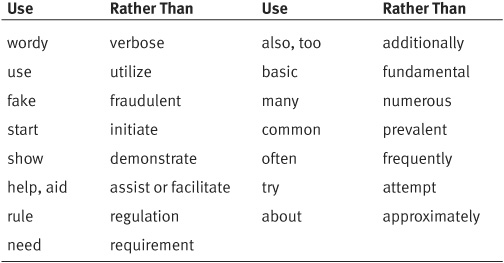Truth 17. The best writers don’t write; they rewrite
“A writer isn’t someone who writes, but someone who rewrites.” This is a basic principle of professional business writers, and if you ask one what it applies to, he or she will say, “Everything.” The reason is simple: The first version is usually awful.
But editing is probably not a subject you were taught during your school years, unless you were lucky enough to have had an amazing English teacher or personal mentor. Like most people, you were probably left to figure out how to improve your writing on your own.
You may have found this hard to do. However, some guidelines and practice can make all the difference. It’s also important to recognize that you’re not trying to imitate twentieth-century academic models. Your goal is to produce clear, effective writing that connects with your readers in the twenty-first-century digital world. This doesn’t require laboring over rules of grammar and structure. In fact, you might find that what you read here conflicts with some of the things your teachers told you.
What kind of writing do the guidelines apply to? Every kind. In fact, they’re even more important to newer forms of communications like e-mail. E-media demand brevity and instant readability. You must know what you want to say and say it clearly and concisely.
Here’s the first guideline: Think of everything you write, even an e-mail, as a first draft with errors you can fix once it’s “down.” Every professional writer writes, then edits. Don’t see this as demanding more time, but as freedom to write more spontaneously rather than getting hung up on word choice or structure. Plan to edit. This enables you to take advantage of the other ideas that follow.
Think short words—Words with one or two syllables are best. Use words with three or more syllables sparingly and deliberately, and when you can’t think of a shorter substitute. Why? First, the fewer syllables your words have, the faster your writing can be read, and speed is everything. Remember your readers? Short of time, impatient, jaded?
Furthermore, short words are always clear and understood by nearly all English speakers. They feel natural—because it’s the way we talk. And they feel more trustworthy than complicated words. It probably relates to our language’s history: The original Anglo-Saxon supplied the short, basic words, whereas long ones from Latin and French were grafted on later. This means we have many more word choices than most languages, but for contemporary business writing, choose the short ones where you can.
Short Words Work Best

Think short sentences—Long sentences slow down reading, and you lose your audience. Who has time to figure out what somebody is trying to say?
Various studies on preferred sentence length indicate that averaged over the whole document, 12 to 15 words is about right. The sentence you’re reading now contains 23 words, but averaged with the four preceding sentences, the number of words per sentence is 14.
You don’t have to accept this as a hard and fast rule, but notice that “ideal” length is likely a lot shorter than you thought. If long sentences plague your writing—and trust us, you are not alone—you can shorten them in three basic ways: Cut unnecessary words, cut unnecessary thoughts, and break long sentences into short ones.
Think short paragraphs—Research on readability—how fast people read and how much they understand—shows that a paragraph should average 45 words, and no more than 65. That’s only three to five sentences.
You can prove this to yourself by flipping through a few magazines of different types. To read pages of dense type with few white spaces, you’ve got to be very motivated. Not that much of what you write is likely to be a “must-read,” even if you’re the boss, so give your readers a break—literally. Use short paragraphs, subheads, and visuals (if called for) such as charts or graphs.
The cure for long paragraphs is easy: Break them up. Avoid chopping in the middle of a thought, but three to five sentences usually cover an idea. You may need to watch out for your transitions, though—more on that soon.
Do the guidelines apply to e-media?—Yes! Even more than with “traditional media,” e-mails, Web sites, blogs, letters, proposals, and everything else need to be reader friendly. You need shorter words, sentences, and paragraphs. Particularly on screen, people don’t like to read a lot of material, and they don’t like to scroll.
Think short documents—What does nearly every business audience have in common? A short attention span. Think about your own impatience: You want to know the point of an e-mail or letter before you read it. You want to know the gist of the message immediately. You don’t want to figure out what’s important—you want the writer to do that for you.
In general: Half the length can double your chances of getting a document read.
